In DC circuits, we say that the negative terminal of battery is considered as ground(0V). But in AC circuit, the polarity of votage change continuously but what is ground in AC circuits with respect to which polarity changes? Please also explain the concept of ground in circuits in little bit more detail. In books, this concept of ground is not taken into account.
-
Is the question about mains AC voltage or something else? – Justme Apr 05 '20 at 07:03
-
AC votage used in breadboard for tasks in lab which is not more than 24 V. – Manu Apr 05 '20 at 07:11
-
You seem pretty convinced that the negative terminal of a battery is always ground. In [this](https://cdn.kastatic.org/googleusercontent/NHBKEwERqNMlxaxUdIpaBz_KHXkfqXuvyDVDaApCu_gHI3k3lF3Y0hZFksYz8fYAa-aaN0BQyb8Na9IiWbksmUbS) dc circuit, which node is ground? – across Apr 05 '20 at 07:11
-
No, generally negative terminal of DC source is considered as ground. – Manu Apr 05 '20 at 07:12
-
2In AC circuits also you have the freedom to consider any node you like as ground. All the other potentials shift accordingly. It is fine because it is the potential difference that matters, not potential. – across Apr 05 '20 at 07:14
-
Ok, so from what kind of power supply the AC would be coming from? – Justme Apr 05 '20 at 07:14
-
Have you studied oscillators or waveform generators yet ? – across Apr 05 '20 at 07:15
-
Related: https://electronics.stackexchange.com/questions/55345/help-me-understand-the-relationship-between-positive-negative-neutral-and-grou – MarkU Apr 05 '20 at 07:18
-
No, I haven't studied oscillators and waveform generators. – Manu Apr 05 '20 at 07:32
-
Do you have inverter in your home? See [this](https://www.youtube.com/watch?v=qVeERT4nyz8) short video on converting DC to AC – across Apr 05 '20 at 07:36
7 Answers
Ground as a concept comes from referencing earth as a baseline voltage potential, that is, the ground. If you think about how mains wiring works, the AC signals vary with respect to each other, but they also refer to the earth as well - by design. That’s why there’s a grounding rod at the power feed to your house, that is tied to the neutral return.
To summarize, a single-phase AC feed will have four connections at the panel:
- Line 1
- Line 2 (inverse of line 1)
- neutral (carries any imbalance between line 1 and 2)
- earth ground (bonded together with neutral at the panel)
That said, there’s no specific reason for a DC or AC circuit to have a defined, fixed voltage with respect to earth - in fact, many systems don’t, they have a ‘floating ground’, which is kind of an oxymoron, but it means that the reference is only local to the circuit.
By convention, a local ‘ground’ is usually chosen from the voltage node that serves as the return path for all the voltages in the system.
And that reference can be literally any voltage node. For example, modern cars tie the (-) battery terminal to the car body as ground. But it wasn’t always this way - early cars and many British vehicles until the 1980s or so tied the battery (+) to the car body and called that ‘ground’.
- 49,832
- 2
- 47
- 138
-
-
If you have a battery operated equipment like cell phone or multimeter, it has no connection to earth ground, the negative wire of battery is just a return wire for currents, it could be the point selected as 0V or circuit ground reference point. – Justme Apr 05 '20 at 07:48
-
I use a car body as an example of the arbitrariness of ‘ground’ in a self-contained system. – hacktastical Apr 05 '20 at 08:08
-
Manu, every power source needs to have a supply and a return path to make a complete circuit. A typical system with multiple supplies (e.g., +5V and +12V for a PC disk drive) will share a common return connection for the two voltages. Customarily, this is designated as ‘ground’, but this is only by convention. Any single one of the lines could be the return - we could call the disk drive yellow wire ‘ground’ and consider the black wire -12V and red -7V and the circuits being powered would not care. – hacktastical Apr 05 '20 at 17:38
In AC supplied power circuits, if the supply has an isolated/floating output, like directly coming from a AC transformer secondary, then it has no voltage reference to anything set beforehand so on the circuit board you can freely select your ground reference point, as all you get is AC voltage between two wires.
What it is will depend on is what you are going to use it for.
Sometimes you may want to consider one wire as 0V "neutral" and the other wire as being "live" with 24 VAC.
Sometimes you may want to consider both wires being "live" with 12 VAC so the 0V point is selected like it was coming from a center tapped transformer.
Sometimes all you do is rectify the AC input to DC output with a full bridge rectifier, so you would set the rectified negative to be 0V, and so AC input would not be fixed to any stable potential because it would be ground referenced via the bridge diodes and diodes have voltage drop based on current over them.
- 127,425
- 3
- 97
- 261
-
Best explanation! Please explain the last paragraph how bridge rectifier's input AC voltage is not fixed to any stable potential in little bit more detail. – Manu Apr 05 '20 at 07:51
-
Just think for a moment a diode. Does it have constant voltage over it at all times? Especially when being fed AC? – Justme Apr 05 '20 at 08:00
-
-
Correct. So with AC transformer supplying a full bridge rectifier, will either of the AC wires be stably set to any voltage, if the diode bridge negative output is set to be the 0V reference for rectified DC? – Justme Apr 05 '20 at 08:20
In ac circuits power is transmitted at high voltage along a transmission network with no neutral only 3 phases .when the voltage is stepped down at a transformer for distribution to buildings the transformer type is a delta star transformer or delta Y transformer ( look it up ) the delta side (primary winding) is the 3 phase power from the power grid . The star side (secondary winding ) still 3 phase power but voltage is much reduced , this is where the neutral is "created" the 3 windings are all connected directly to earth and neutral under the transformer so the potential of neutral is 0 volts. If the winding was not connected to earth at one end and you measured voltage across the winding when energised it would read 0 volts because the winding is effectively the same point. There would be no potential difference .
Earthing is basically maintaing a good connection with the earth at the transformer through any metal work in an electrical installation and any appliances connected. The safe disconnection of a circuit breaker requires the earth fault path to have a low resistance as in the event if a fault it would act as a circuit back through the earth cable or the earth if you have a earth grounding rod back to the transformer and through the phase into your breaker and as long as enough current is flowing to overload it it will trip and stop anyone getting a shock.
- 11
- 2
-
Are you sure you are answering to right question? It's not about how mains voltage is distributed or earthed. – Justme Apr 05 '20 at 09:37
-
Don't think you read the entire post. It was an explanation of polarity in ac circuits and the difference and similaritys between neutral and earth. for which you need to explain that the neutral conductor is not on the entire network and only created at a transformer with the earth. Best explained in my opinion by describing the method of transmission and distribution. No point in describing half the system. And no harm in adding additional information. – Jamie Dethier Apr 05 '20 at 13:20
The term 'ground' is generally loosely applied to a common or reference point in isolated AC / DC circuits.
In AC / DC mains circuits 'ground' / 'earth' refers to an actual connection to earth.
In a 3 phase star-connected system, say at a distribution transformer, the star point is earthed and referred to as a 'neutral'. In such a system the line-to-line voltage is called the line voltage and line-to-neutral voltage the phase voltage. Line voltage is equal to √3 * Phase voltage. The earthed neutral ensures that exposure of personnel, coming in contact with a line, is limited to phase voltage only. The earthed neutral facilitates tripping of the system during an earth fault.
Some standards mandate connection of the neutral to earth at the user end while others forbid that.
- 15,929
- 1
- 14
- 42
In DC circuits, we say that the negative terminal of battery is considered as ground(0V). >But in AC circuit, the polarity of votage change continuously but what is ground in AC >circuits with respect to which polarity changes? Please also explain the concept of ground >in circuits in little bit more detail. In books, this concept of ground is not taken into >account.
The first thing to understand is Electricity always returns to its source. In DC this may be a battery and in AC it is generally a transformer.
The ground in AC is Zero volts (0v). The current in AC will always travel back to its source using the wire which is at Zero volts (0v). In a single phase system this will be the Neutral wire. The Neutral is kept at Earth Potential (0V) by being directly connected to the Earth.
In a multiple phase system the current will return because the phases are at Zero volts (0v) potential to the other phases.
To further explain multiple phase systems each phase is kept out of cycle with each other such that the phases when summed together equal zero volts (0v) which allows the current to return to its source.
- 1
- 1
n DC circuits, we say that the negative terminal of battery is considered as ground(0V).
Sometimes.

simulate this circuit – Schematic created using CircuitLab
Figure 1. Two 9 V batteries series connected but with various grounding options.
Even in a DC circuit we can call any point ground. It's just a reference point from which we take readings.
But in AC circuit, the polarity of voltage change continuously but what is ground in AC circuits with respect to which polarity changes? Please also explain the concept of ground in circuits in little bit more detail. In books, this concept of ground is not taken into account.
For AC measurements your meter only measures magnitude of an AC voltage. Again when taking measurements we need a reference point. This is usually the neutral which has been "neutralised" by connecting it to Earth at the supply transformer.

Figure 2. For AC we have the same situation as with DC but with no sign - just the voltage magnitudes.
When working with AC, therefore, it is common to measure the voltages from the neutral point. In Figure 2 we can connect any one of the three terminals of a centre-tapped transformer to Earth and then take voltage readings at the other terminals.
- 168,990
- 12
- 186
- 385
It may come surprising to you, but in any microwave oven, the anode of the magnetron tube –and thus, the + of the DC part of the circuit— is tied to the case and so, grounded.
- 13,636
- 1
- 19
- 33